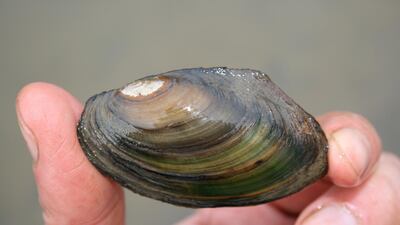Scientists are warning there is a "high risk" of conservationists accidentally spreading pathogens while trying to protect endangered species.
Moving endangered species to new locations, a measure often used as part of species conservation strategies in a bid to restore degraded ecosystems, can unintentionally spread diseases and parasites, a new report says.
Research published on Monday in the Conservation Letters journal studied the impact on endangered freshwater mussels.
It said there is growing interest in moving mussels to new locations to boost threatened populations, or so they can be used as biological filters to improve water quality, due to their role in cleaning the water of many of the world's rivers and lakes.
Studies revealed that a parasitic worm, Rhipidocotyle campanula, which can leave mussels completely sterile, was identified as a huge risk for captive breeding programmes where mussels from many isolated populations are brought together.
"We need to be much more cautious about moving animals to new places for conservation purposes, because the costs may outweigh the benefits," said the report's author Dr David Aldridge, from the Department of Zoology at Cambridge University.
"We've seen that mixing different populations of mussels can allow widespread transmission of gonad-eating worms - it only takes one infected mussel to spread this parasite, which in extreme cases can lead to the collapse of an entire population."
Pathogens can easily be transferred between locations when mussels are moved, the reports says, and may cause an entire population to completely collapse.
In other cases, infections may not cause a problem unless they are present when other factors, such as lack of food or high temperatures, put a population under stress, leading to a sudden outbreak.
The report recommends that species are only relocated when absolutely necessary and quarantine periods - tailored to stop transmission of the most likely pathogens being carried - are used.
It identifies four key factors that determine the risk of spreading pathogens when relocating animals: the proportion of infected animals in both source and recipient populations; density of the resulting population; host immunity; and the life-cycle of the pathogen.
"Moving animals to a new location is often used to protect or supplement endangered populations," said Josh Brian, a PhD student at the Department of Zoology at Cambridge University.
"But we must consider the risk this will spread pathogens that we don't understand very well at all, which could put these populations in even greater danger."
The report also warns that different populations of the same species may respond differently to infection with the same pathogen because of adaptations in their immune system.
It cites the case of a pack of endangered wolves which died after being moved to Yellowstone National Park because the animals had no immunity to parasites carried by the local canines.
The researchers also warn that stocking rivers with fish for anglers and sourcing exotic plants for home gardens could also move parasites and diseases around.
"Being aware of the risks of spreading diseases between populations is a vital first step towards making sure we avoid unintentional harm in future conservation work," said Isobel Ollard, a PhD student at Cambridge University's Department of Zoology who was involved in the study.

